ISRO’s LVM3 rocket launches GSAT-7R, the Navy’s most advanced communication satellite
Indigenous GSAT-7R weighs 4,400 kg, making it the heaviest comms satellite launched from India; will provide Navy with secure telecom coverage across Indian Ocean region; feeds into ISRO’s Gaganyaan preparations
India’s heaviest home-built satellite GSAT-7R lifts off on LVM3 rocket
Updated – November 03, 2025 11:55 am
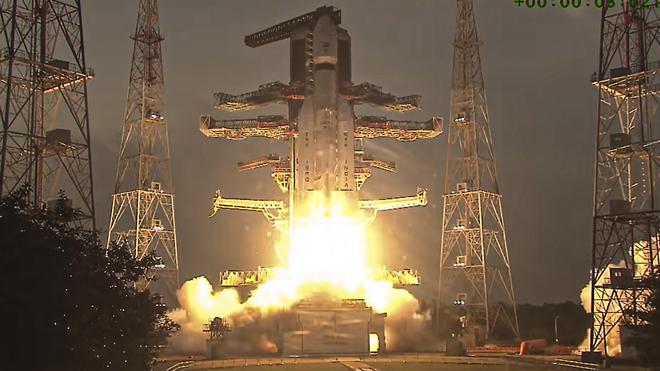
In this screenshot from a video posted on Nov. 2, 2025, ISRO’s launch vehicle LVM3-M5 carrying the communication satellite CMS-03 lifts off from the launch pad at the Satish Dhawan Space Centre, in Sriharikota, Andhra Pradesh. Photo: @ISRO Official/YT via PTI Photo
The Indian Space Research Organisation (ISRO) on Sunday (November 2, 2025) successfully launched the Indian Navy’s advanced communication satellite GSAT-7R (CMS-03) from the Satish Dhawan Space Centre in Sriharikota. India’s LVM3 launch vehicle has successfully launched the CMS-03 communication satellite in its 5th operational flight (LVM3-M5) on November 02, 2025. CMS-03 is a multi-band communication satellite that will provide services over a wide oceanic region including the Indian landmass. CMS-03, weighing about 4400kg, will be the heaviest communication satellite to be launched to Geosynchronous Transfer Orbit (GTO) from Indian soil. The previous mission of LVM3 launched the Chandrayaan-3 mission, where in, India became the first country to land successfully near the lunar south pole.
The launch vehicle has been fully assembled and integrated with the spacecraft and has been moved to the Launch Pad on October 26, 2025 for further pre-launch operations.
LVM3-M5/CMS-03 MISSION
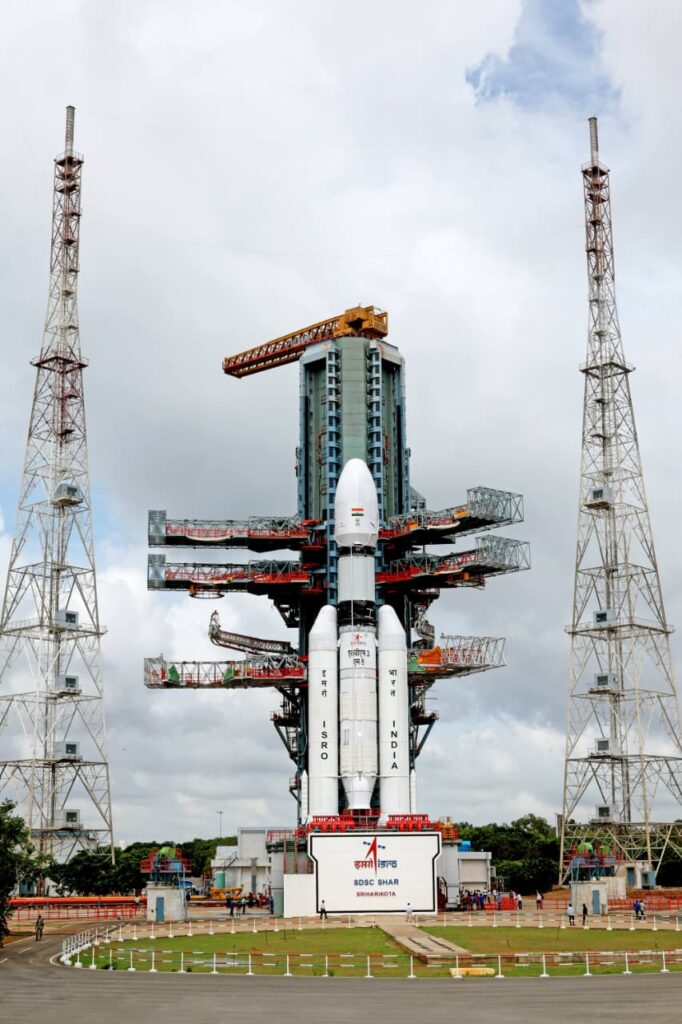
Successfully launched the GSAT-7R (also known as CMS-03) communication satellite for the Indian Navy using its LVM3 rocket on November 2, 2025. The mission, designated LVM3-M5, marks a significant boost to the Navy’s secure communication capabilities across the Indian Ocean Region.
Mission Highlights
- Launch Vehicle: Launch Vehicle Mark-3 (LVM3-M5), ISRO’s most powerful operational rocket, known as the “Bahubali”.
- Launch Site: Satish Dhawan Space Centre in Sriharikota, India.
- Satellite Weight: Approximately 4,400 kg, making it the heaviest communication satellite launched into a Geosynchronous Transfer Orbit (GTO) from Indian soil.
- Orbit: The satellite was successfully injected into a precise Geosynchronous Transfer Orbit (GTO).
- Key Test: For the first time, ISRO successfully re-ignited the cryogenic upper stage of the LVM3 in orbit, a critical experiment for future missions like the Gaganyaan human spaceflight program.
ISRO’s LVM3 rocket successfully launched the Navy’s GSAT-7R satellite, marking a major step toward India’s first human space mission. At precisely 5:26 p.m. local time on 2 November, the LVM3 rocket, India’s most powerful launcher, thundered into the sky carrying the Navy’s GSAT-7R satellite, also known as CMS-03. Within minutes, it had placed the 4,410-kg payload into a precise geosynchronous transfer orbit.
https://www.youtube.com/embed/yAR9fV48Hjw India launches GSAT-7R: a home-grown communications satellite for the Navy
Built entirely by Indian engineers, GSAT-7R will replace the decade-old GSAT-7, which has served the Navy since 2013. The new satellite carries high-capacity transponders to link ships, aircraft, and command centres across the Indian Ocean with secure voice, video, and data streams.
Defence officials said the system will expand maritime domain awareness and provide the Navy with uninterrupted communications, even in adverse conditions.
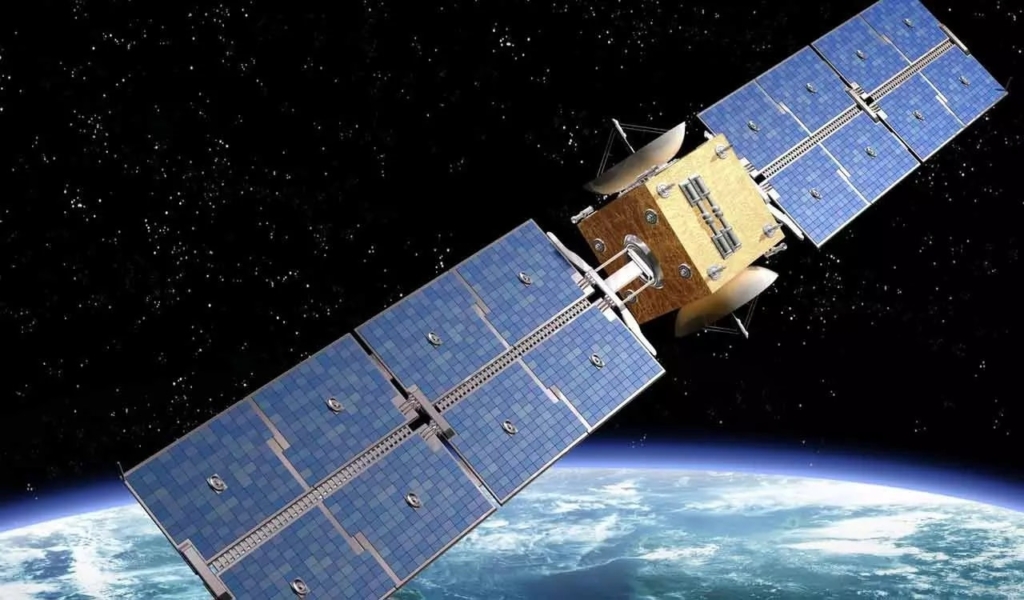
“It’s a big leap in how the fleet connects and operates across wide oceanic distances,” said a senior officer involved in the programme.
The launch also underscores India’s ability to do what it once relied on others for. In earlier years, satellites of this size had to be flown on Europe’s Ariane-5 rockets. This time, ISRO’s own LVM3 carried the load, the heaviest Indian-built satellite ever launched from Indian soil. ISRO successfully reignites LVM3 cryogenic stage in orbit
Alongside the satellite success came a quieter but equally important breakthrough. For the first time, ISRO reignited the C25 cryogenic upper stage of the LVM3 while in orbit, a delicate manoeuvre that confirmed its stability and control in weightlessness.
“This in-flight test gives us valuable data for future missions,” said ISRO chairman Dr V. Narayanan. “It proves our cryogenic systems can be restarted in space, which is critical for complex and multi-satellite launches.”
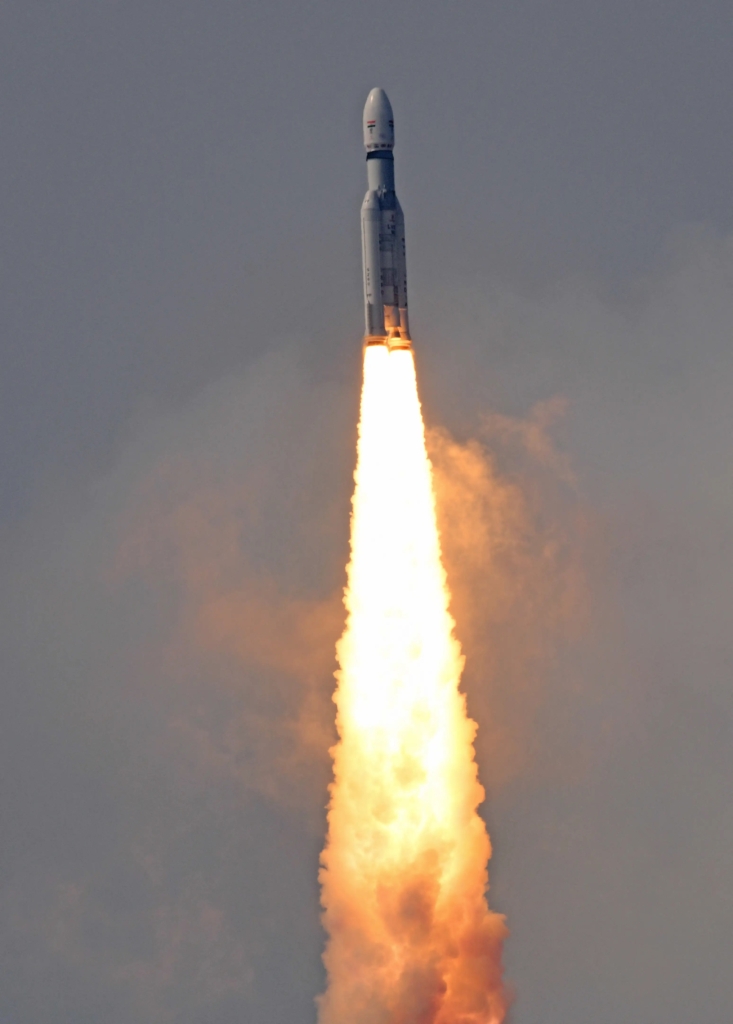
The C25 stage, which burns liquid hydrogen and oxygen, will soon evolve into a more powerful C32 version capable of lifting heavier payloads. It’s the same technology that will power the rockets used for India’s forthcoming human spaceflight under the Gaganyaan project.
ISRO’s Gaganyaan mission: building capacity for India’s first human spaceflight India’s Gaganyaan space mission to launch in 2027, aims to put a human on the Moon by 2040
India’s Gaganyaan space mission marks the country’s first independent human spaceflight, scheduled for 2027. The programme is part of a long-term roadmap that includes building a national space station by 2035 and placing an Indian astronaut on the lunar surface by 2040.
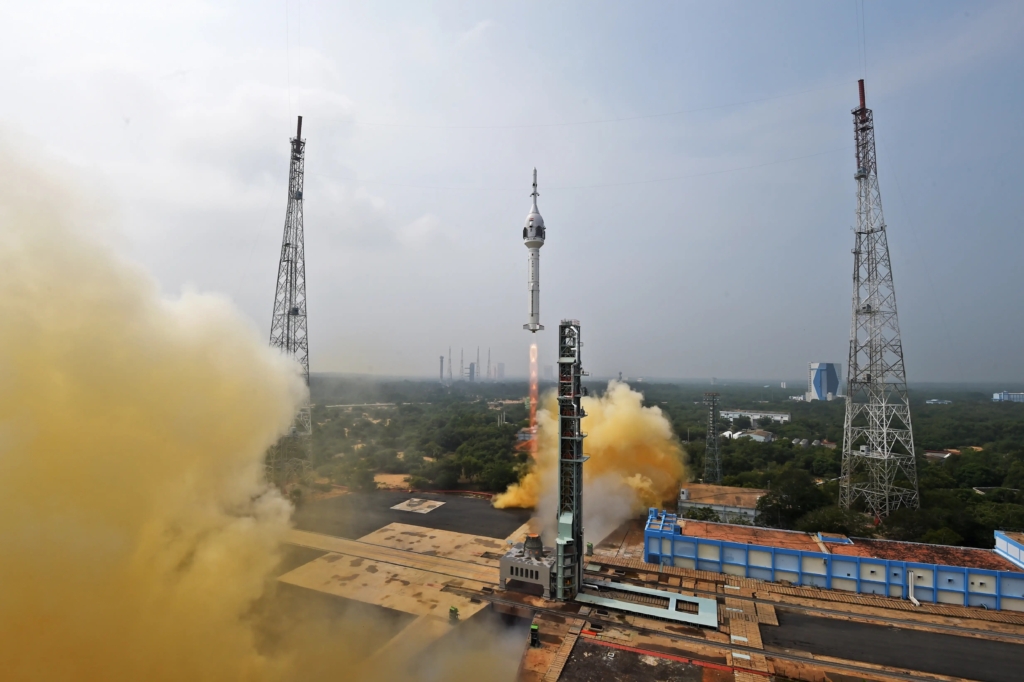
“We’re back in space after 41 years and what an amazing ride it’s been.”
Shukla’s journey on Axiom Space’s multinational Ax-4 mission was only the second time an Indian had travelled to space, following Rakesh Sharma’s 1984 Soviet-backed flight.
Yet this mission was different. The experience Shukla gained in orbit will directly support Gaganyaan, the cornerstone of India’s wider human spaceflight roadmap, which stretches from the launch of a national space station by 2035 to an ambitious lunar landing by 2040.
From Gaganyaan test flights to Moon landings
Addressing Parliament on 18 August 2025, Federal Minister for Space Dr Jitendra Singh outlined India’s evolving space ambitions.
The Gaganyaan programme is advancing through a series of critical tests, with the first crewed launch now scheduled for early 2027.
Looking further ahead, India plans to establish the Bharatiya Antariksh Station by 2035. Rather than being deployed in one piece, the station will be assembled in orbit from five separate modules.

A demonstration in January 2025 proved India’s ability to align and dock satellites at orbital speeds, a capability mastered by only a handful of nations.
By 2040, India aims to place an astronaut on the Moon — a move that positions it alongside the United States and China, both preparing for future lunar missions.
Gaganyaan: India’s first human spaceflight mission
At the heart of this long-term strategy is Gaganyaan, a mission that represents far more than scientific achievement. It is a declaration of self-reliance: Indian astronauts flying aboard an Indian spacecraft launched by an Indian rocket.
The first crew will consist of four Indian Air Force officers, initially trained in Russia and now undergoing mission-specific preparation in India. At the astronaut training facility, they are being assessed for fitness, psychological readiness, and performance in simulations.

To prepare for the crewed launch, ISRO is conducting a sequence of uncrewed tests. An abort test was completed earlier this year, with another scheduled for late 2025.
These will be followed by uncrewed orbital missions before the full crewed flight in 2027. Final development is underway on the spacecraft’s systems, including its crew capsule, life-support module, and escape mechanism.
How India’s human spaceflight compares globally
India’s roadmap — with a lunar landing planned for 2040 — is ambitious but reflects growing confidence in domestic capability.
The programme has survived pandemic delays, supply chain bottlenecks, and the need for extra safety refinements.
By comparison:
- China launched its first astronauts in 2003 and has since built and occupied the Tiangong space station.
- The United States continues to push forward with NASA’s Artemis programme and commercial crew providers, aiming to return humans to the Moon this decade.
India is pursuing a measured path, emphasising phased testing and frugal engineering. Minister Singh has repeatedly stressed that Gaganyaan’s costs are significantly lower than comparable international missions, thanks to India’s efficient development model.
Gaganyaan and India’s growing space economy
India’s human spaceflight efforts are closely tied to economic growth. How India’s space agency is capitalising on space sector growth
India is witnessing an impressive expansion of its space sector, said NewSpace India Limited chairman Dr Radhakrishnan Durairaj.
NewSpace India Limited (NSIL) was established by the Indian government as the https://youtu.be/Fk45IMPkrew India is witnessing an impressive expansion of its space sector, said NewSpace India Limited chairman Dr Radhakrishnan Durairaj.
NewSpace India Limited (NSIL) was established by the Indian government as the commercial arm of the public space agency, with the aim of working with private companies to enhance the country’s space industry.
Speaking during the Bahrain International Air Show in November, he said the company currently owned 11 in-orbit communication satellites and had grown to an impressive size in terms of capital.
Substantial revenue
“We were established in 2019 to commercialise the space products and services in India and also to look after the operational missions of the Indian Space Research Organisation, in a much, much more expansive way that we need to do,” he said.
“Since our company got established, we have made quite a substantial revenue in our businesses.
“I’m proud to say that our company is a $1 billion company in terms of the authorised capital that we are processing.”
End-to-end space-related activities
He added: “With respect to this space activities at NewSpace India Limited, we are doing end-to-end space-related activities, be it for building large vehicles through industries, providing launch services to international customers, building satellites, launching the satellites, doing the mission support services and technology transfer.
“In fact, today we own 11 communication satellites in orbit … So we are one of the first satellite operators in India, providing all the communication services.”
Subscribe to the FINN weekly newsletter Since the opening of the sector to private firms in 2020, dozens of startups have partnered with ISRO, contributing to propulsion, robotics, satellite manufacture, and mission design.
The Gaganyaan programme alone has already generated spinoffs in materials science, medicine, and electronics, creating benefits beyond spaceflight. Skyroot boosts India’s space industry with $27.5m funding round
RedefiningAccess to Space
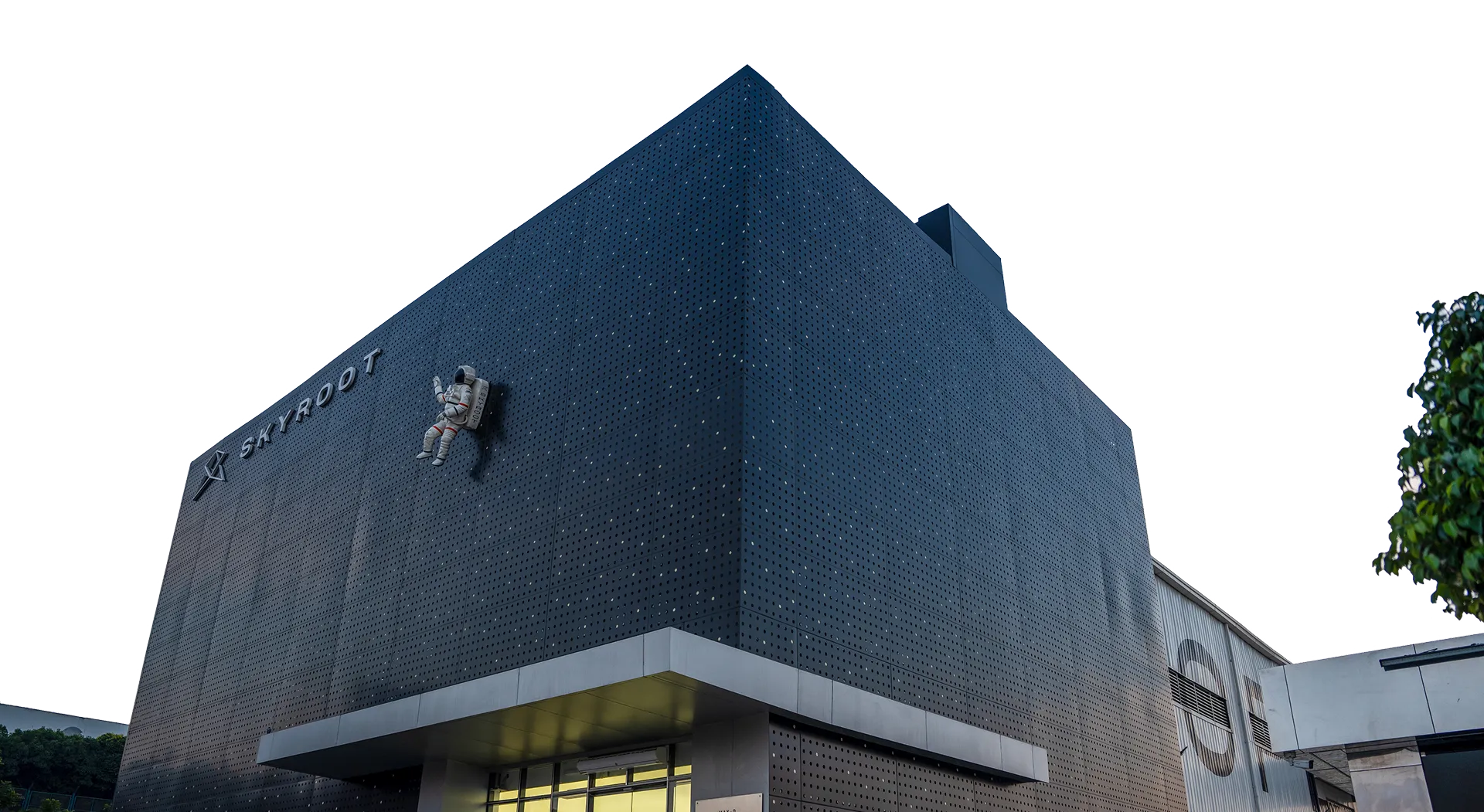
For decades, reaching space has been a privilege reserved for a few, with satellite operators facing long delays and steep costs — barriers that stall innovation and humanity’s progress.
In 2018, space scientists-turned-entrepreneurs Pawan Kumar Chandana and Naga Bharath Daka asked a simple question: What if launching into space could be as accessible and routine as commercial air travel?
Skyroot was born from this vision, not just to build rockets but to bring to Earth the limitless possibilities of space.
With a team of over 500 experts, Skyroot blends India’s rich space heritage with startup agility, and precision engineering advanced launch vehicles in Hyderabad, Telangana. has given India’s space industry a boost by announcing $27.5m in a fresh round of funding led by Singapore investment company Temasek.
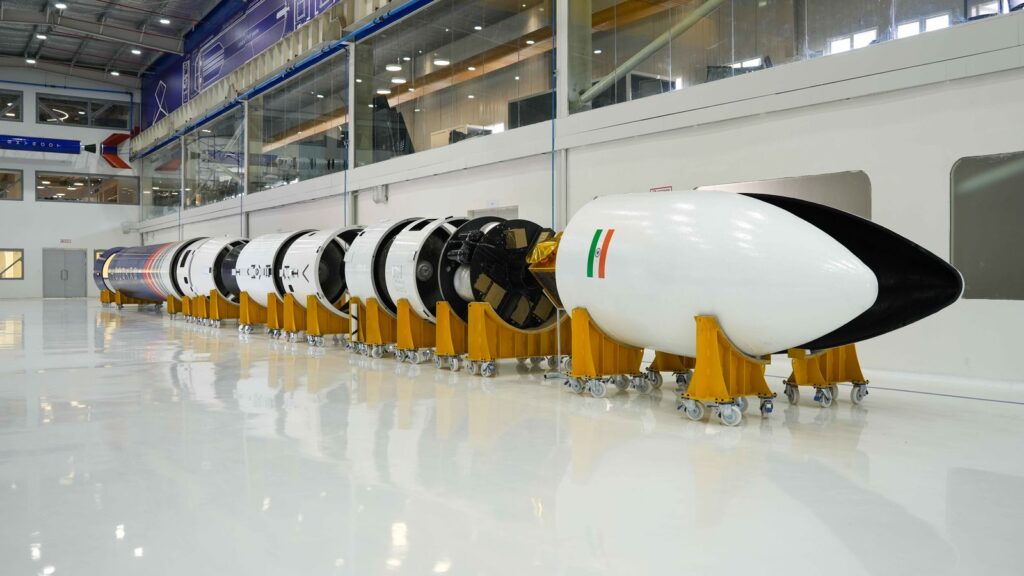
Infinity
An expansive workspace to transform blueprints to space reality.

Our Journey to Orbit We take our first step. Skyroot office is established in Hyderabad.

Fired up. We achieve India’s first static fire test of a privately built rocket engine, Raman-1.

As cool as it gets. We test fire India’s first privately built cryogenic engine, Dhawan-1.

Beginning of a new era. Mission Prarambh successfully launches India’s first private rocket, Vikram-S.
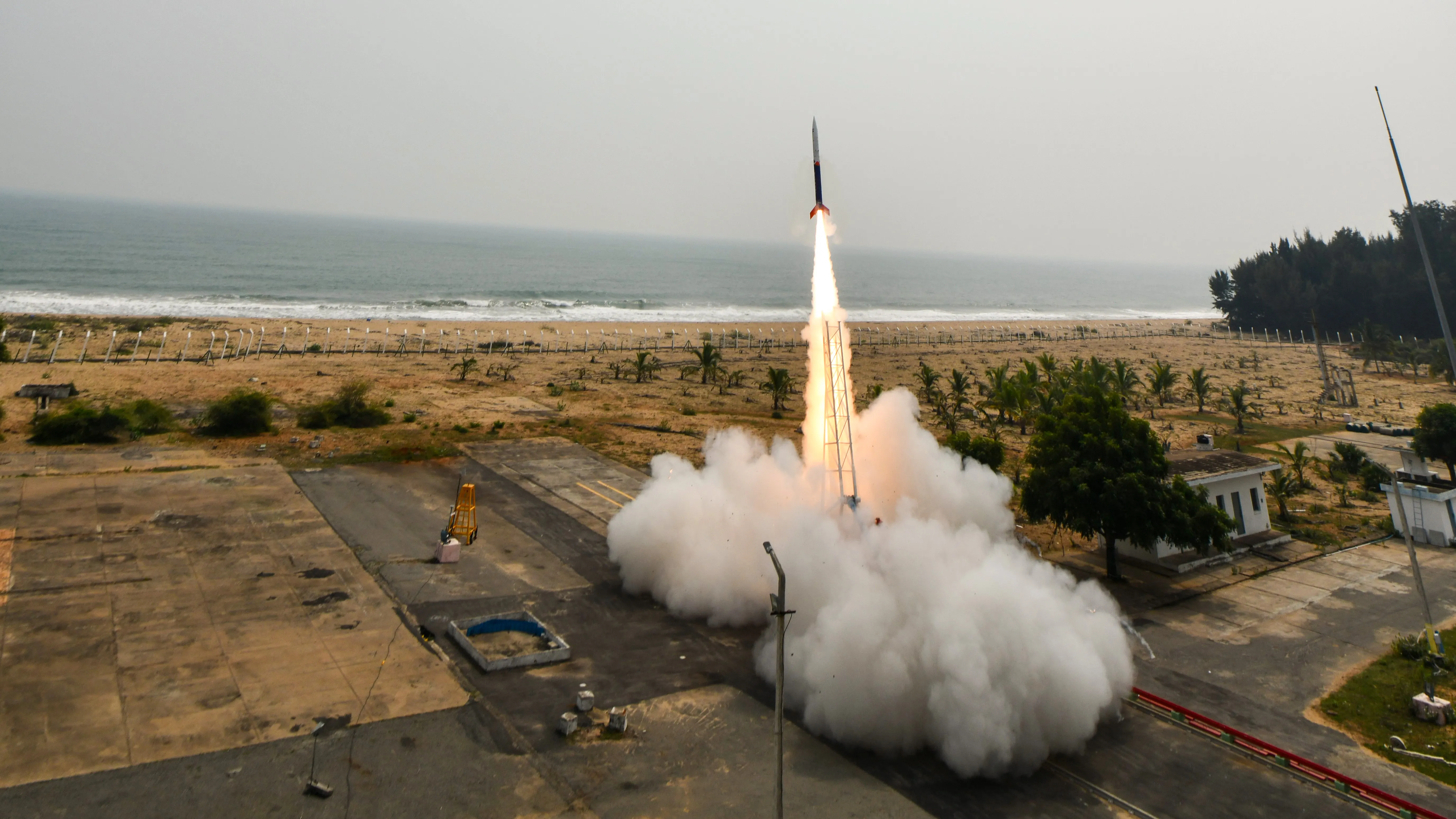
Base station, reports! We open our headquarters in Hyderabad, Max-Q. Solid progress. We static fire India’s then largest private rocket stage, Kalam-250.
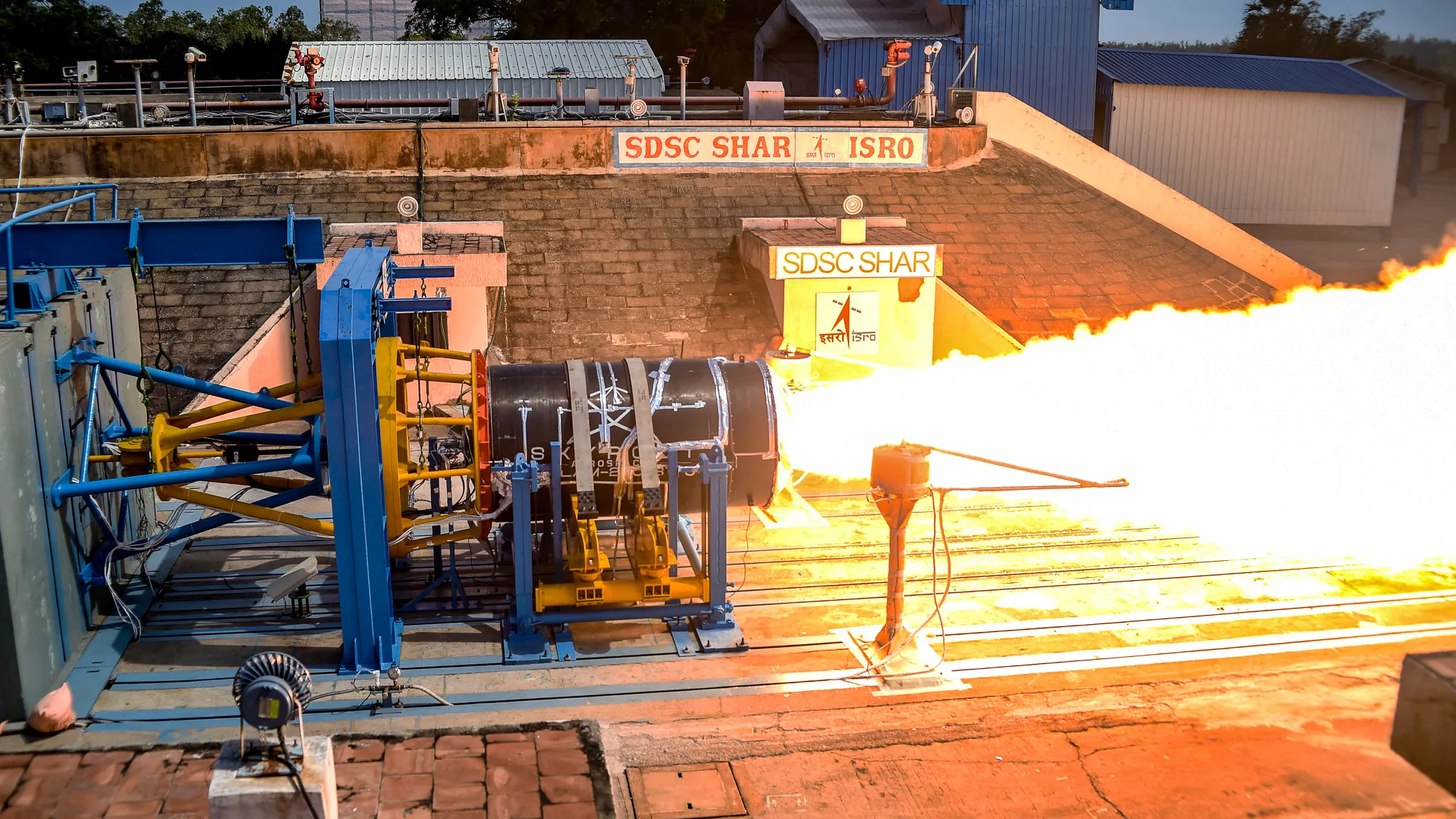
Separation anxiety none. We validate the pneumatic separation mechanism of the payload fairing of Vikram-1.

Our Investors